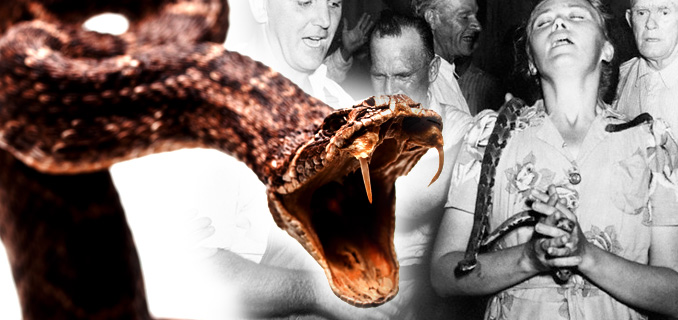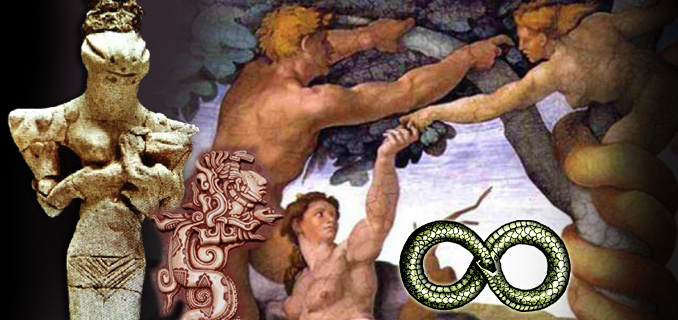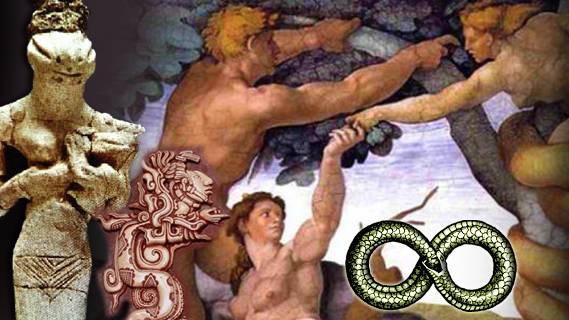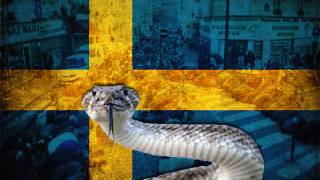Even Unto Death: Snake Handling, Bringing the Serpents into the Light
Source: projects.timesfreepress.com

---
EVEN UNTO DEATH
By Kevin Hardy | Times Free Press
These believers drink poison. Handle snakes. Risk all in the name of the Lord. For a century, their audacious brand of faith has been practiced out of sight in the Appalachian hills.
Now a new generation of pastors pulls back the curtain, bringing souls and serpents into the light.
This place doesn’t look like much.
The brick exterior is falling away. The homemade sign standing by the dead-end gravel road is written in crooked stencil lettering.
“Tabernacle Church of God. Pastor Andrew Hamblin. Friday 7:30. Sunday 1:00.”
But there is no meekness inside this windowless, concrete box of a church. Sound explodes and escalates, a chaotic jumble of tambourines, electric guitar and humming.
At times the volume is so loud it rattles the foundation. Foreheads gleam from olive oil anointing, tongues mumble unrecognizably, hallelujahs scream to the ceiling, arms stretch wide.
There will be a miracle tonight.
It’s in the air.
People can feel it.
Someone could drink from a pickle jar filled with strychnine or lye, but not fall dead. Someone could turn a propane torch to his hand and feel no pain. Someone could wrangle a rattlesnake and not feel its fangs.
Places like this used to be private, secrets tucked away in the hills. Now many people travel from across the country, even the world, to sit in a pew and bear witness to the sights and sounds of this church, to see these people flirt with death. But to the congregants — the families who have worshipped this way for generations, the former alcoholics and drug users who are looking for a sign — this is salvation.
The outsiders want to see the rattlesnakes, but snakes don’t always appear during worship. Sometimes they remain curling in a box on the edge of the altar, untouched. They only come out when there is a call, when God tells a believer to take up the danger and trust Him.
For nearly an hour the music plays, a blues sound with a contagious rhythm.
Then, a frenzy begins to build. The music intensifies. The cries grow louder. Some stumble in trances, each person immersed in his or her own experience.
Outsiders peer through the chaos to see what happens next.
[...]
Read the full article at: timesfreepress.com
From Wikipedia:
Snake handling or serpent handling is a religious ritual in a small number of Pentecostal churches in the U.S., usually characterized as rural and part of the Holiness movement. The practice began in the early 20th century in Appalachia, and plays only a small part in the church service. Practitioners believe serpent handling dates to antiquity and quote the Gospel of Mark and the Gospel of Luke to support the practice:
And these signs shall follow them that believe: In my name shall they cast out devils; they shall speak with new tongues. They shall take up serpents; and if they drink any deadly thing, it shall not hurt them; they shall lay hands on the sick, and they shall recover. (Mark 16:17-18)
Behold, I give unto you power to tread on serpents and scorpions, and over all the power of the enemy: and nothing shall by any means hurt you. (Luke 10:19)
Another scripture used to support snake handlers’ belief is Acts 28:1-6, which relates that Paul was bitten by a venomous viper and suffered no harm.
Snake-Handling Christians: Faith, Prophecy and Obedience
By Nicola Menzie | Christian Post
The recent death of a Christian minister from West Virginia who believed that the Bible instructs the faithful to handle snakes and drink poison has put into question a doctrine many believe is unbiblical and dangerous but that its adherents, biblical literalists, say they are compelled to obey.
To outsiders, mainstream Christians included, snake handling seems foolhardy at best and deadly at worst. And despite commending their desire to be obedient to Scripture, Christians have argued that snake handlers are wrong to take Jesus’ words in Mark 16:17-18 literally. His statement, they argue, is not a commandment and, what’s more, intentionally putting oneself in danger is tantamount to tempting God.
Greg Laurie, senior pastor of Harvest Christian Fellowship in Riverside, Calif., suggested in a Facebook response to a reader doubtful that God "would agree with this practice," that the passage in Mark is to be interpreted spiritually and not literally, as it "means that we as Christians are indestructible until God is done with us."
Citing Acts 28:2-4, Laurie added that "Paul was bitten by a poisonous snake in the book of Acts and did not die, and that is because God still had a plan for him. However, to intentionally handle venomous snakes is to me ’testing’ more then trusting the Lord. I do not recommend it for obvious reasons."
Mark Randall "Mack" Wolford, pastor of House of the Lord Jesus in Matoaka, was passionate about handling snakes during worship services and, according to what the Pentecostal leader told The Washington Post last year, might have drunk two gallons of strychnine – a strong poison commonly used as pesticide to kill rats. If not strychnine, some snake-handling churches keep a flask of carbolic acid at the altar instead.
[...]
A belief in divine power and healing, including speaking in tongues, or unknown or foreign languages, is not uncommon to Christians. But the Signs Following community is unique when it comes to an interpretation of this passage in Mark, which some scholars doubt was included in the original Gospel account.
"Serpent handling comes out of that Pentecostal tradition which looked for biblical evidence of possession of the Holy Spirit, initial evidence of baptism of the Holy Spirit. They sought that evidence, which they settled upon as glossolalia or speaking in tongues," explained Ralph Hood, who is considered the foremost expert on snake-handling Christians. The University of Tennessee at Chattanooga Psychology of Religion professor, who has studied snake handlers for over 25 years, said he knew Pastor Wolford as well as the community of believers.
"While you find text for just plain speaking in tongues you also find text for just plain serpent-handling and that’s why they focus on the Gospel of Mark 16:17 and 18 where it says ’these signs shall follow them that believe.’ So they consider themselves to be Signs Followers believers," he told The Christian Post, adding that these Christians "handle serpents simply to be obedient to God and to follow the signs."
Serpent-handling first emerged in the early 1900s and its popularity is credited to George Hensley, a Pentecostal minister from Tennessee. Experts claim that between 80 and 100 handlers have been killed as a result of venomous snake bites, but not all members of the community actually handle serpents – nor are all snake handlers united in their practices and beliefs.
They all agree, however, that they are compelled by Scripture to handle serpents and some even incorporate ingesting poison or handling fire during worship.
Read the full article at: christianpost.com
Serpent Experts Try To Demystify Pentecostal Snake Handling
By John Burnett | NPR
Two weeks ago, NPR of Pentecostals in Appalachia who handle snakes in church to prove their faith in God. The story got us thinking: Why are the handlers bitten so rarely, and why are so few of those snakebites lethal?
After the story aired, NPR was contacted by snake experts who strongly suggest that a snake’s reluctance to bite a religious serpent handler may have more to do with the creature’s poor health than with supernatural intervention.
The herpetologists at the Kentucky Reptile Zoo have been following the activities of Pentecostal snake handlers for years. They have watched hours of video of snake-handling services and examined snakes used in church.
"The animals that I’ve seen that have come from religious snake handlers were in bad condition," says Kristen Wiley, curator of the Kentucky Reptile Zoo, a facility in the town of Slade that produces venom and promotes the conservation of snakes. "They did not have water. The cages had been left not cleaned for a pretty long period of time. And the other thing we noticed is there were eight or 10 copperheads in a container that was not very large."
What’s more, she says there was no fecal material in the container, which indicated the snakes were not being fed. Riley says a snake that may be dehydrated, underweight and sick from close confinement is less likely to strike than a healthy snake. Moreover, the venom it produces is weaker.
[...]
[Jaime Coots, Pastor of Full Gospel Tabernacle in Jesus Name in Middlesboro, Ky] rejects the criticism.
"People who don’t believe in it are gonna say anything to try and discredit us, you know, to say that it’s not God actually doin’ it," he says.
Read the full article at: npr.org
The Serpent Scion: Mythic Traditions and the Brotherhood of the Snake
By Scott Alan Roberts and Micah Hanks | Ancient Origins

That fabled moment when Eve, the first mythic wife of man and mother of all living, accepted fruit from the serpent will remain in infamy as the first great deceit of man by the snake. Of course, despite a rich history of symbolism attained by the lowly belly-crawler amidst its ancestry on Earth that predated his encounter with Adam’s wife, this incident, according to the Western mind, became the very summation of the snake’s establishment as a wary foe to mankind. And yet, even beyond the realm of myth, there are many who hold fast to the notion that a strange interconnection may somehow exist between man and reptile; one which could yield more, perhaps, than a mere myth-association.
In terms of that prevalence of the serpent-human hybridization myth and the bloodline of the Serpent in human history, we can indeed depart from this primarily Christian mythos altogether, looking abroad at a variety of traditions around the world in which the lowly serpent rises and, rather curiously, appears in therianthropic, half-human form that is suggestive of this intermingling between the species. To examine only a few examples of such serpentine representations found in world traditions, we find the sibling folk heroes of ancient China, Fu Xi and Nuwa, each of whom bore snake’s tails below the waist. Fu Xi is often accredited with the passing of fundamental knowledge and skills such as handwriting and food gathering, while his sister, Nuwa, is credited with the literal creation of mankind.1, 2 In other words, these half-snake deities of Chinese folklore are both responsible for the creation and education of mankind. Thus, humanity is created, and knowledge gained, from those bearing close associations with the serpent. Similar traditions arise from study of ancient Greek mythology, where Cecrops, mythical first king and founder of Athens, similarly bestowed knowledge of writing and reading unto mankind.3 Greek mythology also featured Echidna, mother of all monsters and human-snake hybrid, appearing virtually identical to the aforementioned serpent deities. And again in Lamia, the Libyan queen and child-eater, this preponderance of Greek snake-people is again made evident.
[...]
Read the full article at: redicecreations.com
Tune into Red Ice Radio where guests speak on serpents, snakes, mythology, religion, symbolism and more:
Jeremy Narby - The Cosmic Serpent, DNA, Knowledge & Intelligence in Nature
Philip Gardiner - Secret Societies, the Knights Templar, Symbolism & Myth
Ross Hamilton, Jim Vieira & Hugh Newman - Hour 1 - Giants, Mound Builders & Etheric Energy
Hugh Newman - Megalithic Sites of New England, Global Earth Energies & Lake Titicaca
David Icke - 2012, The Reptilian & The Peru Experience
Craig Hines - Gateway of the Gods
Pierre Sabak - Hidden Symbolism of the Dragon
Edmund Marriage - Kharsag, Garden of Eden & Earth, Sun, Global Cooling






















